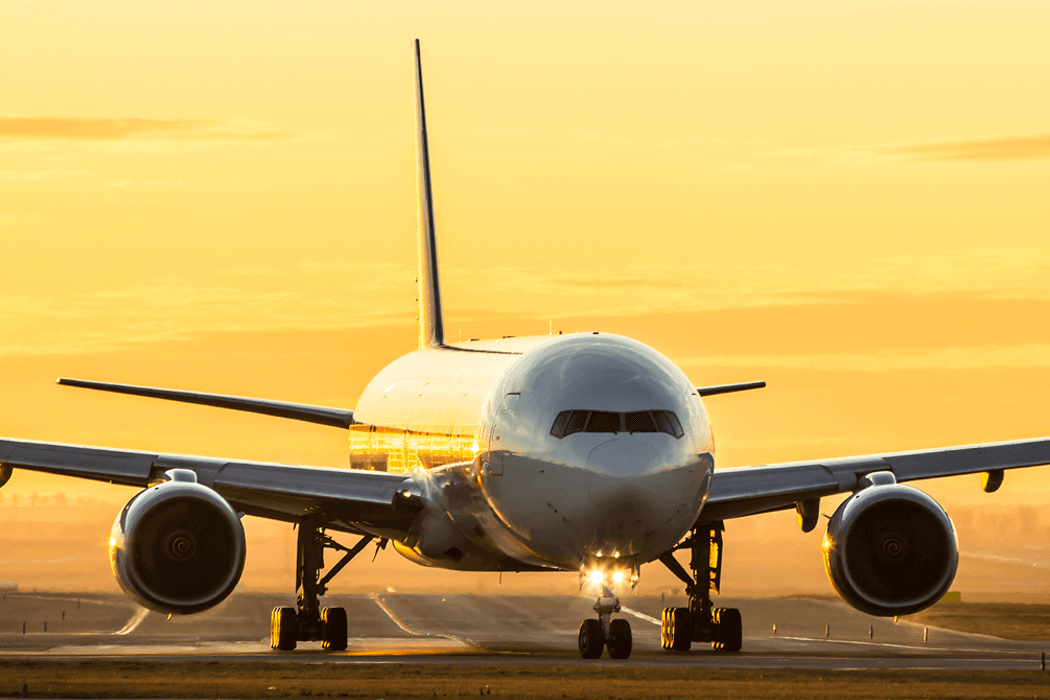
A weekly staple in our house is bananas and most weeks buying bananas is uneventful. As the primary grocery shopper in my family, I typically look for bananas transitioning from green to yellow. Maybe they won’t taste great today, but within a day they should be ready to eat and we’ll have most of the week before the brown spots start to form. Occasionally I will be forced to choose between bananas that are either too green or too ripe. I know the ripe bananas may only take a day or two to develop those dreaded brown spots – making them inedible for my young children – but I tend to choose those over the bananas I consider too green.
This is a pretty good comparison for how it feels to give air freight market updates lately. Providing these updates is one of my responsibilities at C.H. Robinson and normally a straightforward task. Over the past few months,however, I feel like I’m buying a banana that is too ripe. In the days following a new market update that I’ve created, I’m looking for brown spots.
With that in mind, let us examine some of the mid to long-term impacts of COVID-19 on the air freight market. Many shippers and forwarders are wondering when we might return to a “normal” market condition and there are many factors that will come in to play. One of the most significant is demand for travel.
Capacity Impact
Each lane is different, but passenger flights make up a large portion of air freight capacity globally. As demand for air travel steadily increased over the years, airlines have responded with more passenger aircraft to support this demand. This additional equipment increased cargo capacity, even in years where demand for air cargo did not increase at a corresponding level.
With cargo capacity (supply) increasing faster than demand, many airlines operating both passenger and freighter aircraft reconsidered their need for freighters. Some airlines got out of the freighter aircraft market altogether, while others chose to let aging cargo aircraft retire without replacing them.
As a result, when the demand for passenger travel plummeted in the wake of the COVID-19 pandemic, a dramatic reduction in cargo capacity followed. As more countries issued various “stay-at-home” measures, air cargo demand fell, but not to the same level as capacity. This has resulted in congestion and increased rates globally with some lanes more affected than others.
Compared to 2019, we can expect decreased demand for air freight indefinitely. At this point, however, capacity has dropped more than cargo demand. Air rates have accordingly increased around the world. As social distancing measures ease globally, demand for all modes of cargo transportation should increase from the current low levels. At what point will capacity catch up with demand?
Airline Strategy
As previously mentioned, many airlines have shifted their focus towards passengers in recent years. It seems very likely, at least for the remainder of this year, that focus will change. We have seen the efforts of passenger airlines to use a portion of their fleet for cargo alone. Air Canada may be the most aggressive in this strategy, going so far as to remove the seats from some aircraft to load cargo on the passenger deck.
This initiative and additional capacity is welcome and appreciated during this taxing time, but that doesn’t change the fact that this additional capacity is less cost effective. Even when seats are removed or cartons are being loaded in the seats and overhead bins of the passenger deck, they are loaded and unloaded by hand through the passenger entry door. Because of this the capacity available will only be accessible for certain types of cargo and take more time. These inefficiencies add to the cost of operations and ultimately need to be passed through to the shippers.
Final Thoughts
It is likely demand for domestic air travel will recover more quickly than international. The International Air Transportation Association (IATA) recently projected that roughly 50% of the decline in passenger demand for international travel will recover by the fourth quarter of 2020. Without the belly capacity supported by high yield passengers, the air freight market appears unlikely to return to “normal” anytime soon and it is clear the air freight landscape has changed for the foreseeable future.
As the market remains volatile, C.H. Robinson can provide alternative modes of transportation that can mitigate the challenges we expect with the air market. Our international footprint, local expertise, and global suite of service offerings allow us to evolve with the changing market and deliver value to our customers. The new “normal” will not be defined for some time, but C.H. Robinson will continue to provide value generating solutions to our customers in this dynamic market.



